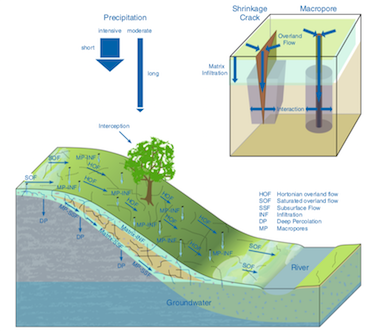
Runoff Generation Research - a process-based hydrological toolbox model in Python¶
RoGeR, Runoff Generation Research, is a process-based hydrological model that can be applied from plot to catchment scale. Roger is written in pure Python, which facilitates model setup and model workflows. We want to enable high-performance hydrologic modelling with a clear focus on flexibility and usability.
RoGeR supports a NumPy backend for small-scale problems, and a high-performance JAX backend with CPU and GPU support. Parallel computation is available via MPI and supports distributed execution on any number of nodes/CPU cores, including multi-GPU architectures.
Inspired by Veros.
RoGeR, Runoff Generation Research, is a process-based hydrological model that supports anything between plot and catchment scale. Roger is written in pure Python, which facilitates model setup workflows.
We want to enable high-performance hydrological modelling with a clear focus on flexibility and usability.
Roger supports a NumPy backend for small-scale problems, and a high-performance JAX backend with CPU and GPU support. It is fully parallelized via MPI and supports distributed execution on any number of nodes, including multi-GPU architectures (see also …).
Inspired by Veros.
If you want to learn more about the background and capabilities of Roger, you should check out A short introduction to RoGeR. If you are already convinced, you can jump right into action, and learn how to get started instead!
Start here
Model equations